Have you ever been asked the question, “If you could go back in time, what would you change?” Perhaps you’d seek to right wrongs, or mend a past relationship. Or maybe, to see someone who is not there anymore for one last time. Moving out from a personal scope though, what if you really could do these tasks, but for the sake of a future generation? Let’s see a bit more about this through “recovering key species for ecosystem restoration”, the theme for 2022’s World Wildlife Conservation Day.
Today’s Actions for Tomorrow’s World
Man’s early intent of controlling nature through the necessary means, a concept termed “Imperial Ecology” had been outlined by Francis Bacon, to be discouraged analytically by George Marsh in 1864. Predictions on the effects of industrialization and urbanization to show correlation and more strikingly so, causation to the deterioration of nature and nature’s ability to recover from the damages we have caused were outlined. By the middle of the 20th Century, these predictions had become blatant facts as ecosystems collapsed and the whole world was on the brink of a crisis.
The International Union for Conservation of Nature (IUCN) published its first red list of threatened species in 1964, depicting the level to which species have dwindled. Following this, UNESCO launched its Man and the Biosphere (MAB) Program in 1971, an initiative to establish known protected wildlife sites, and monitor how humans have affected these sites. Data collected through this program was successful in forming a global network through which research has been conducted, and plans formulated to safeguard wildlife zones.
A merger of ecology and biostatistics and its first use thanks to Mark Shaffer, Population Viability Analysis (PVA) is a method that determines the minimum number of a considered species crucial to surviving in a long-term time frame, in its preferred habitat. In the modern day, computational models and improved survey methods have given rise to more detailed time series and demographic PVAs. These have allowed scientists and conservationists as well as governments, to set policies and boundaries between human interactions with protected nature sites.
On the Edge; Ready to Fall
By the turn of the 21st Century a rise in desertification, deforestation, and industrialization of terrestrial areas, and high levels of plastic and waste pollution, acidification, and creation of dead zones in aquatic environments have led to an alarming level of ecosystem destruction as well as biodiversity loss. we can see this in a rather alarming way from the graph below, which shows how the cumulative percentage of species loss has risen over the years in different continents.
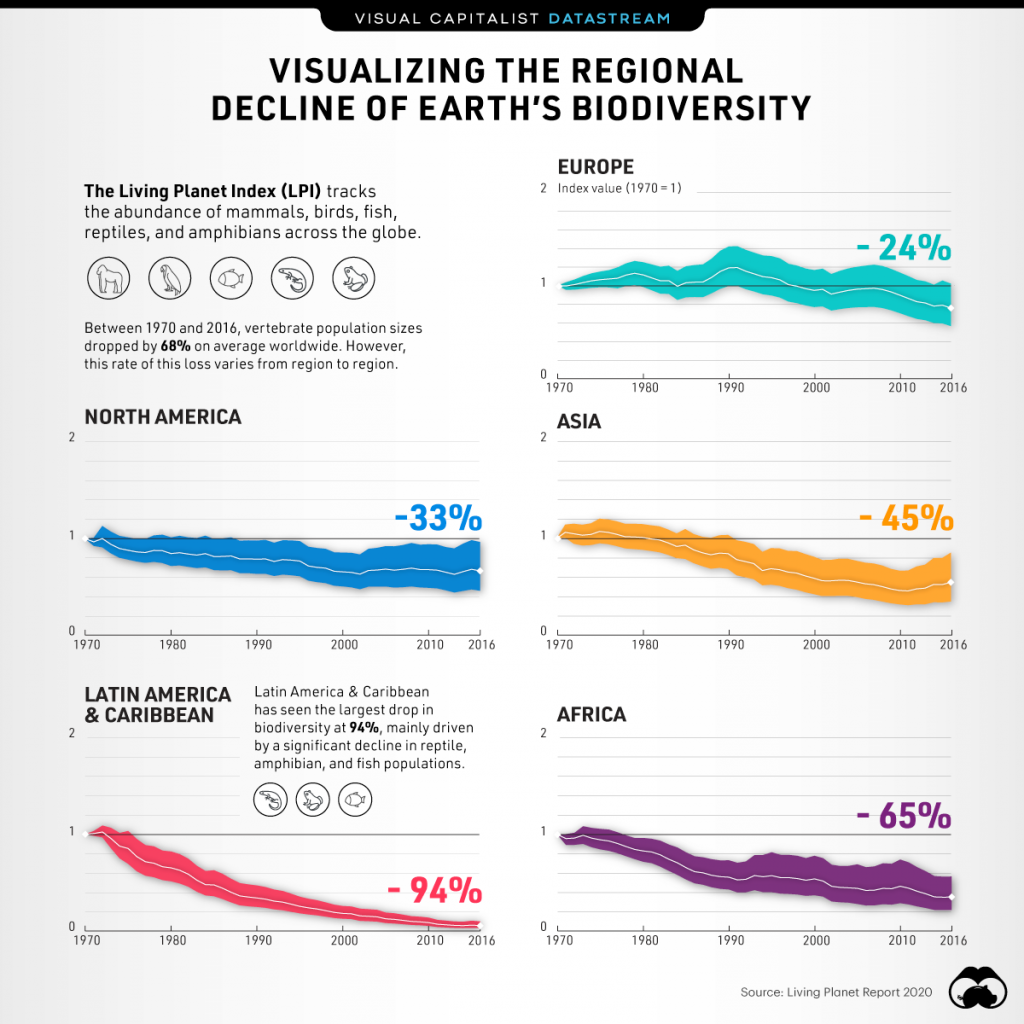
The importance of conserving and replenishing ecosystems and species to their viable levels was seen as a course of action that was to be taken immediately. Multilateral Environmental Agreements (MEAs) were signed between nations to safeguard ecosystems while partnering up to propose and put to life, innovative approaches that can be taken to reduce the staggering weight that humans have put on nature. The results of which have shown great (but yet rather slow and heavy) progress. Understanding ecosystem services is vital here.
These “services” can be classified into supporting (such as the formation of soil and purification of water), provisioning (those that are required for human use in daily essential activities such as for food and building), regulating (natural buffers to weather disasters, pest control through food cycles and upholding ecosystems through pollination) and cultural (national significance given to the element of an ecosystem based on cultural traditions and beliefs as well as aesthetic values assigned to such elements) categories.
Ecologists have taken an argument that “as the enormous contributions of ecosystem services to human life are not readily quantifiable, humans drastically undervalue these services while exploiting the natural world’s resources for profit.” Shown time and time again that this statement can in fact be seen to be true, we can observe small changes occurring in the form of movements throughout the globe in the modern day.
Setting the Record Straight
With 6 of the 17 Sustainable Development Goals (SDGs) set out by the United Nations in 2015 directly concerning the protection of the environment and conserving ecosystems, how we interact with wildlife is crucial. Deforestation to provide room for livestock and commercial crops has led to an alarming imbalance between the species populations of animals we rear for food and those that roam the wilds freely. Furthermore, climate change has resulted in massive changes in the factors that keep our ecosystems stable. Sri Lanka has even been declared a global biodiversity hotspot (areas that are rich in biodiversity but at high risk of loss due to human causes) in the past years. How can we, as responsible citizens help to bring back harmony between nature and humans?
The answer lies in many forms, but the greatest and most important would be a community-based response to conserve and safeguard wildlife species and ecosystems. Seen rather prominently in indigenous tribes of Asia, Africa, the Americas, and the islands of Oceania, communities have gathered and on some occasions even taken arms, against various forces that seek to threaten the wildlife existing in their neighboring ecosystems. This not only builds an understanding between man and the wild but also mutual respect garnered within human minds and hearts for other species.
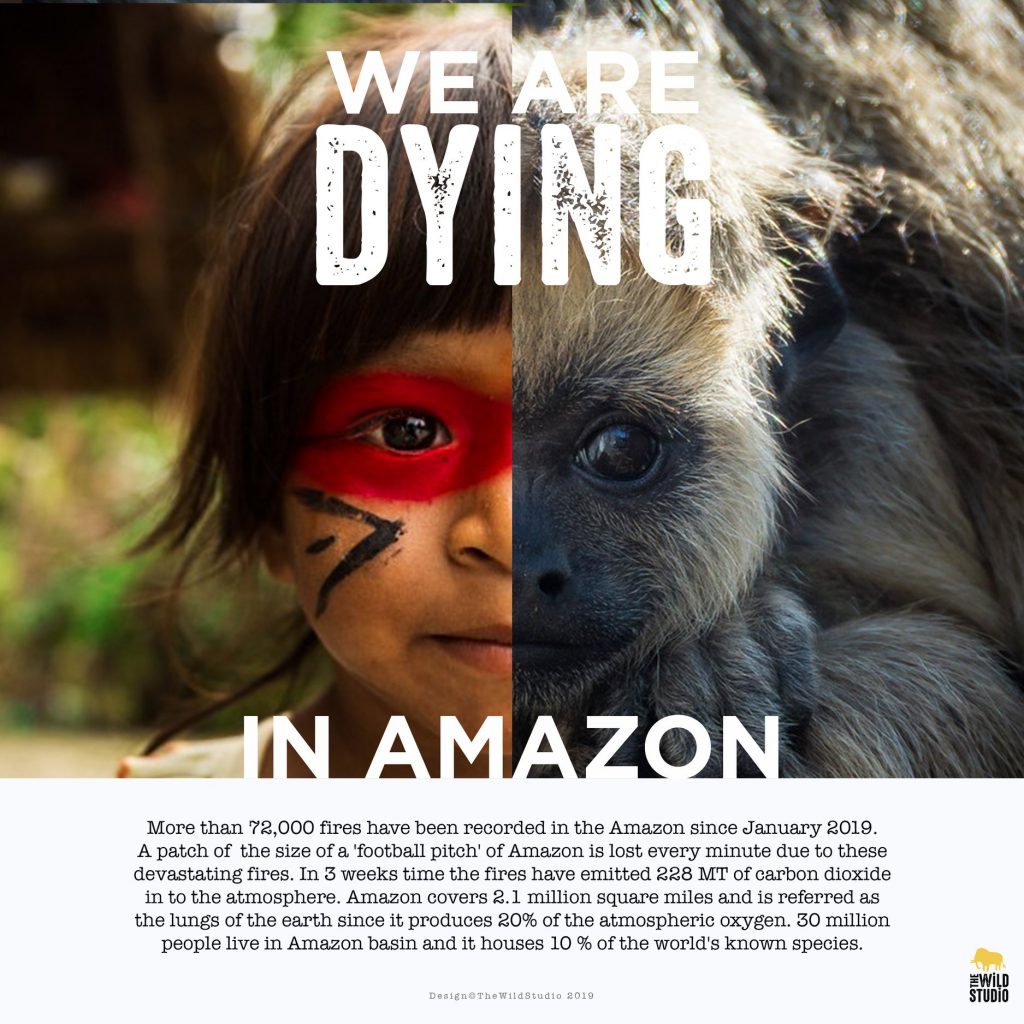
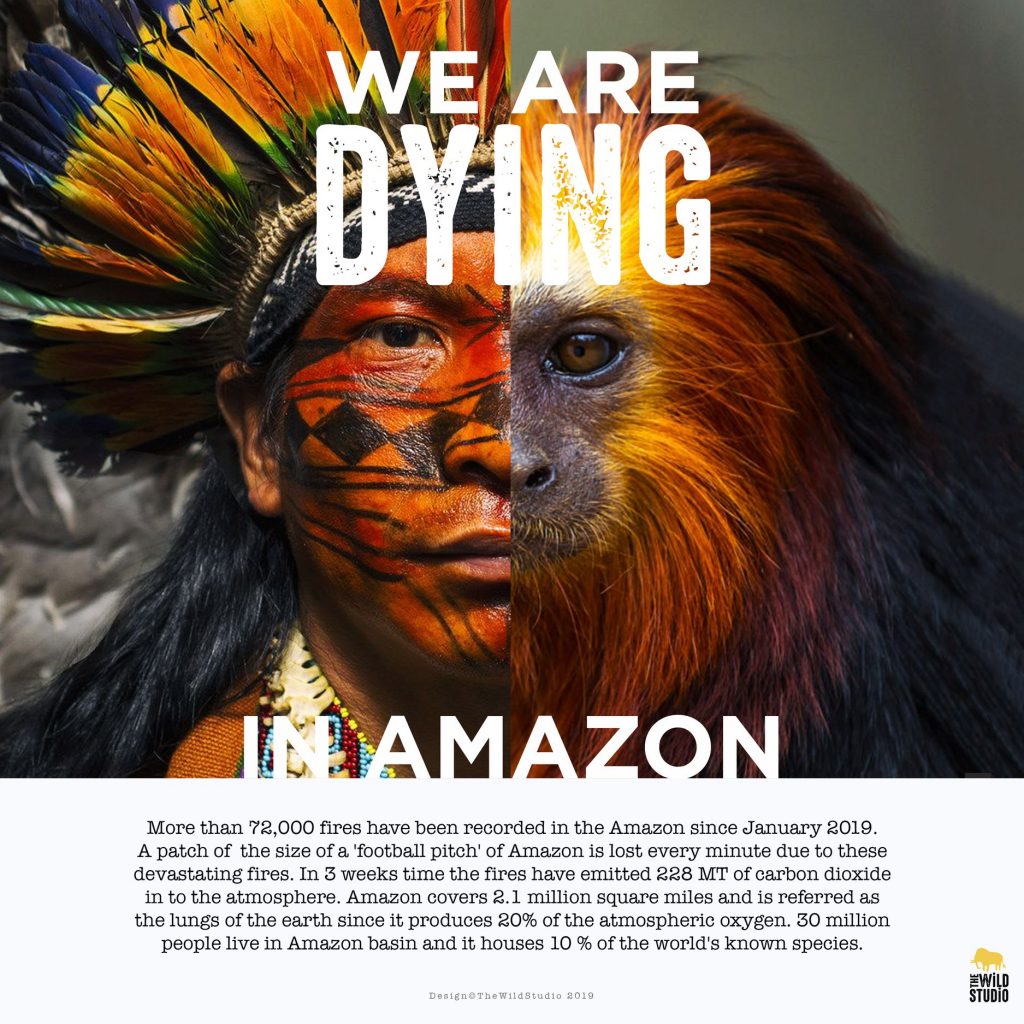
Secondly, communities themselves calling out for and lobbying for the strict enforcement of environmentally friendly guidelines in infrastructure projects is key. Organizations and governments are to be held responsible and accountable for the actions that lead to wildlife harm and ecosystem destruction, for turning a biased blind eye can lead to a large number of people themselves, being blindsided by the loss of ecosystem services.
The step-by-step change in our own individual lifestyles is important too. As a third point, reducing the stress we have imposed on the global ecosystem and species population through demands for more animal-based diets can be reduced. This, while seemingly small, adds up in enormous ways, leading to a healthier planet and for the most part, a healthier lifestyle too. Finally, encouraging more students to participate in research based on biodiversity and species studies, as well as in volunteer programs to help collect data and protect ecosystems provide ways to conserve wildlife existing within them.
Countdown to Extinction
A point to note is how conservation efforts have succeeded in bringing back populations from the brink of extinction, to threatened, yet thriving levels. The Iberian Lynx, a key figure who played a part in the formulation of Predator-Prey differential equation models was one such species. Many more such as grizzly bear and bison populations to name have been revived thanks to conservation efforts. We should, as citizens occupying planet Earth on a rent basis, strive to protect our fellow inhabitant species, bringing back threatened wildlife to a safer population assessment.
Let proper action to recover dwindling species be a priority in our minds this day before to quote, “All are gone, all but one – No contest, nowhere to run – No more left, only one – This is it, the countdown to extinction…” (“Countdown to Extinction”, Megadeth 1992).
Written By:
Dasith Tilakaratna,
4th Year Undergraduate,
Department of Physics,
Faculty of Science,
University of Colombo.
References:
- Fewster, H., & Hallinan, C. (Eds.). (2019). The Ecology Book; Big Ideas Simply Explained. London: Dorling Kindersley Limited.
- How community-led conservation can save wildlife | Moreangels Mbizah (2019). [Motion Picture]. Retrieved December 03, 2022, from https://www.youtube.com/watch?v=pR83Woy0zDs
- Juniper, T. (2016). What’s Really Happening to Our Planet? (First ed.). London: Dorling Kindersley Limited.
- United Nations. (n.d.). World Wildlife Day EN. https://www.un.org/en/observances/world-wildlife-day
Image Courtesy:
- Title Image: https://bit.ly/3unTiIP
- 1st Content Image: https://bit.ly/3iET8Kg
- 2nd Content Image: https://bit.ly/3B3BtST
- 3rd Content Image: https://bit.ly/3F1EMey
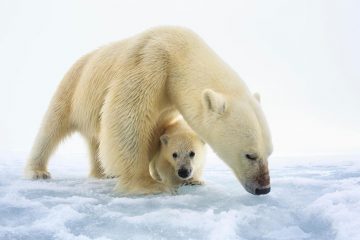

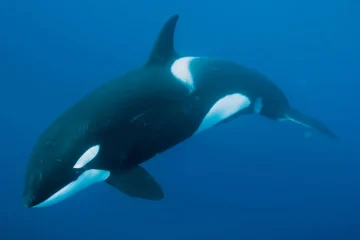
0 Comments